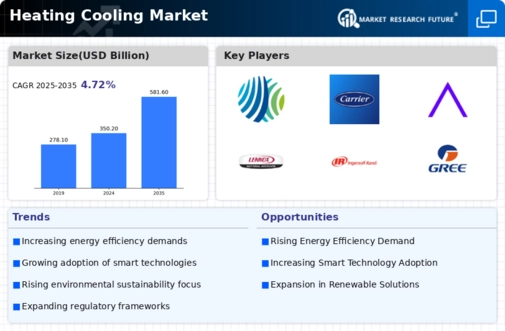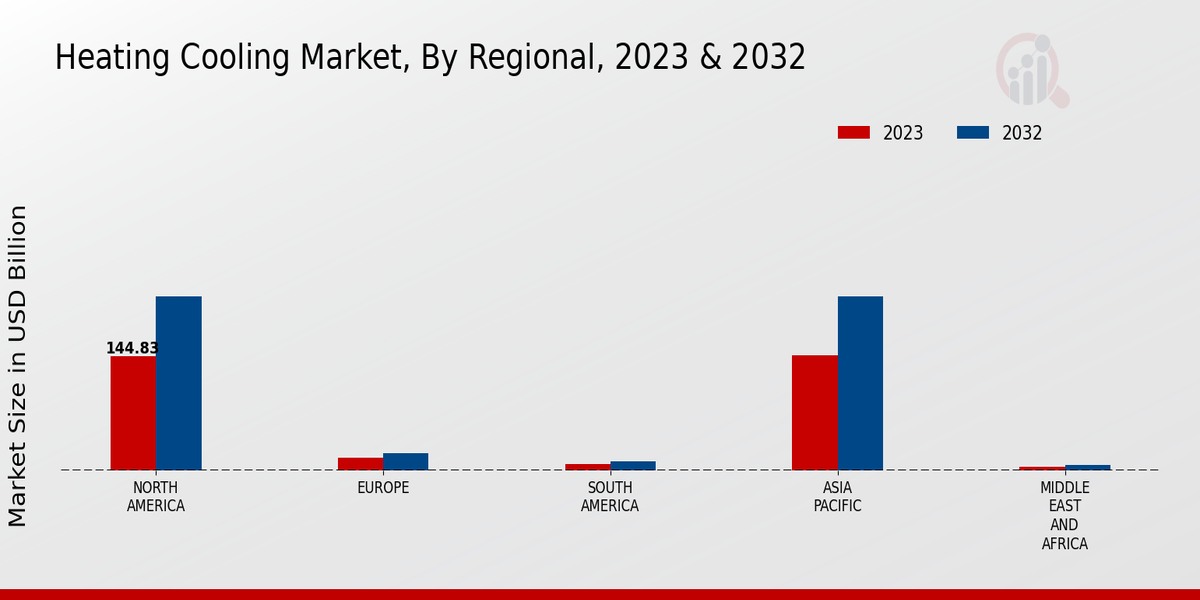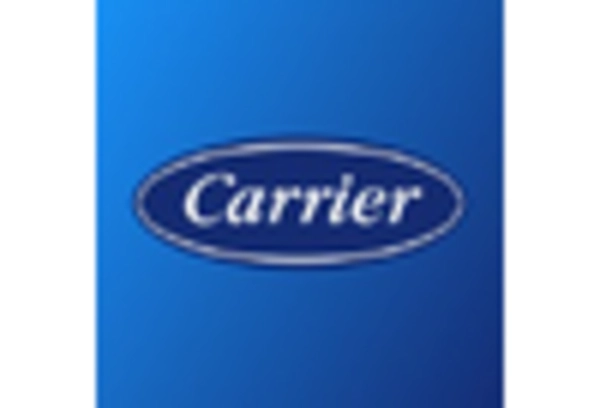Increasing Energy Efficiency Standards
The Heating Cooling Market is experiencing a notable shift towards enhanced energy efficiency standards. Governments and regulatory bodies are implementing stricter guidelines to reduce energy consumption in residential and commercial buildings. This trend is driven by the need to lower greenhouse gas emissions and combat climate change. As a result, manufacturers are compelled to innovate and develop more efficient heating and cooling systems. For instance, the introduction of energy-efficient HVAC systems has led to a significant reduction in energy usage, with some estimates suggesting that these systems can reduce energy consumption by up to 30 percent. Consequently, the Heating Cooling Market is likely to witness a surge in demand for products that meet or exceed these efficiency standards, thereby fostering growth in this sector.
Shift Towards Renewable Energy Sources
The transition towards renewable energy sources is significantly impacting the Heating Cooling Market. As more consumers and businesses seek sustainable energy solutions, the demand for heating and cooling systems that utilize renewable energy sources, such as solar and geothermal, is on the rise. This shift is driven by both environmental concerns and the potential for long-term cost savings. For instance, solar-powered HVAC systems can reduce reliance on traditional energy sources, leading to lower utility bills and a reduced carbon footprint. Additionally, government incentives and rebates for renewable energy installations are further encouraging this trend. As a result, the Heating Cooling Market is likely to see increased investment in renewable technologies, fostering innovation and growth in this sector.
Technological Advancements in HVAC Systems
Technological advancements are playing a pivotal role in shaping the Heating Cooling Market. Innovations such as smart thermostats, variable refrigerant flow systems, and advanced heat pumps are revolutionizing how heating and cooling systems operate. These technologies not only enhance user comfort but also improve energy efficiency. For example, smart thermostats can learn user preferences and optimize energy usage, potentially reducing heating and cooling costs by up to 20 percent. Furthermore, the integration of IoT (Internet of Things) in HVAC systems allows for real-time monitoring and maintenance, which can lead to increased system longevity and reduced operational costs. As these technologies continue to evolve, the Heating Cooling Market is expected to expand, driven by consumer demand for smarter, more efficient solutions.
Urbanization and Infrastructure Development
Urbanization and infrastructure development are key drivers of the Heating Cooling Market. As populations migrate to urban areas, the demand for efficient heating and cooling solutions in residential and commercial buildings is escalating. This trend is particularly evident in developing regions, where rapid urban growth necessitates the construction of new buildings equipped with modern HVAC systems. According to recent data, urban areas are projected to account for over 70 percent of global energy consumption by 2030, underscoring the critical need for efficient heating and cooling solutions. Consequently, manufacturers are focusing on developing systems that cater to the unique demands of urban environments, such as space-saving designs and enhanced energy efficiency. This dynamic is likely to propel the Heating Cooling Market forward, as stakeholders seek to meet the challenges posed by urbanization.
Rising Consumer Awareness of Indoor Air Quality
Consumer awareness regarding indoor air quality is increasingly influencing the Heating Cooling Market. With a growing understanding of the health impacts associated with poor air quality, individuals and businesses are prioritizing HVAC systems that offer superior air filtration and purification capabilities. This trend is particularly pronounced in urban areas, where pollution levels are higher. Research indicates that effective air filtration can reduce airborne contaminants by up to 99 percent, making it a critical factor in consumer decision-making. Consequently, manufacturers are responding by developing advanced air quality solutions integrated into heating and cooling systems. This shift not only enhances the appeal of HVAC products but also positions the Heating Cooling Market favorably in a health-conscious consumer landscape.



















Leave a Comment